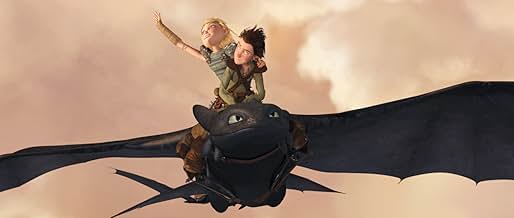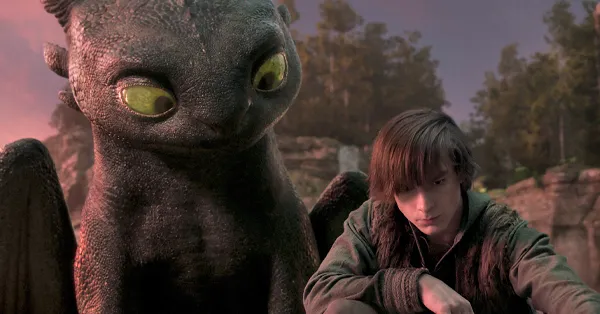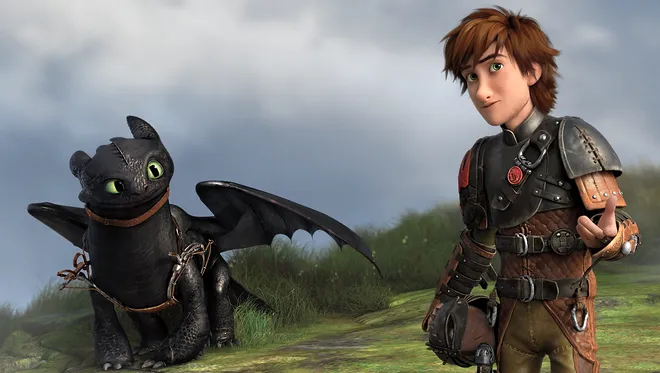
Remember the first time you watched a skinny Viking kid befriend the most feared dragon in the archipelago? That moment when Hiccup extended his hand to Toothless, and everything we thought we knew about dragons—and friendship—changed forever? That's the magic of How to Train Your Dragon, a story that took what could have been just another animated adventure and transformed it into something genuinely profound.
When DreamWorks released the first How to Train Your Dragon movie in 2010, they weren't just creating entertainment—they were crafting a modern mythology that would resonate with audiences for years to come. Based on Cressida Cowell's beloved book series, the HTTYD franchise has become a cornerstone of animated storytelling, teaching us that sometimes the greatest adventures begin when we choose understanding over fear.
The Heart of Berk: Understanding the World
The island of Berk isn't just a setting—it's a character in itself. This windswept Viking stronghold, perpetually shrouded in mist and surrounded by treacherous seas, represents everything about the harsh Norse world where survival meant fighting. For generations, Vikings and dragons were locked in an endless cycle of conflict, each side viewing the other as nothing more than a threat to be eliminated.
But here's what makes the story brilliant: it doesn't dismiss the Vikings' fears as irrational. Dragons were dangerous. People did get hurt. The conflict was real, rooted in genuine survival instincts. This grounding in reality makes Hiccup's journey all the more remarkable—he's not just making friends with a cute pet, he's fundamentally challenging centuries of survival wisdom.
The Dragon Species: More Than Monsters
One of the franchise's greatest strengths lies in its detailed dragon taxonomy. Each species isn't just visually distinct—they have unique behaviors, abilities, and personalities that reflect real animal psychology:
- Night Furies like Toothless represent the apex predators—intelligent, powerful, but also capable of deep emotional bonds
- Gronckles are the sturdy workhorses, reliable and friendly once you earn their trust
- Deadly Nadders combine beauty with danger, requiring respect and patience
- Monstrous Nightmares embody raw power that needs careful handling
This attention to detail serves a larger purpose: it shows us that what we fear is often simply what we don't understand.
Hiccup's Evolution: The Reluctant Hero's Journey
Hiccup Horrendous Haddock III starts as every parent's nightmare of a Viking heir—scrawny, sarcastic, and more interested in inventing gadgets than wielding battle axes. But that's precisely why his story works so well. He represents all of us who've ever felt like we don't quite fit the mold we're supposed to fill.

What's remarkable about Hiccup's character development is how organically it unfolds. He doesn't suddenly become a traditional Viking warrior—instead, he redefines what it means to be strong. His prosthetic leg, gained in the climactic battle of the first film, becomes not a limitation but a symbol of the price of growth and the reality that heroes aren't invincible.
The Father-Son Dynamic That Hits Different
The relationship between Hiccup and his father Stoick the Vast provides the emotional backbone of the series. It's a masterclass in writing generational conflict that doesn't resort to simple misunderstanding. Stoick loves his son deeply, but he's also a leader responsible for his people's survival. His initial resistance to Hiccup's methods isn't stubborn traditionalism—it's the weight of responsibility.
Their journey from disappointment to understanding to mutual respect reflects real family dynamics. How many of us have struggled to live up to a parent's expectations, or worried that our children won't be prepared for the world's harsh realities?
Toothless: More Than Man's Best Friend
If Hiccup is the heart of the story, Toothless is its soul. This isn't just another animal sidekick designed to sell toys—Toothless is a fully realized character with his own arc, motivations, and growth.
What makes Toothless special isn't just his rarity as the last Night Fury (until we discover otherwise in later films). It's his intelligence, his loyalty, and his own journey from fear to trust to leadership. Watch how he interacts with other dragons—he's not just Hiccup's companion, he's a bridge between two worlds.
The Disability Representation That Matters
By the end of the first film, both Hiccup and Toothless are dealing with disabilities—Hiccup's prosthetic leg and Toothless's damaged tail fin. But the films handle this with remarkable sensitivity. Their limitations become strengths in unexpected ways, and more importantly, they're never defined solely by what they can't do.
This representation matters because it shows young audiences that being different doesn't mean being less capable. It also reinforces the central theme: we're stronger together than apart.
The Franchise Evolution: From Dragon Training to Dragon Riding
The beauty of the HTTYD franchise lies in how it grows with its audience. The first film is about overcoming fear and prejudice. The second explores the cost of power and the complexity of family legacies. The third, The Hidden World, grapples with letting go and accepting that love sometimes means sacrifice.
Key Themes That Resonate
- Environmental Stewardship: The dragons aren't just magical creatures—they're part of an ecosystem that needs protection
- Cultural Change: How societies can evolve beyond their survival instincts
- Found Family: The dragon riders become a chosen family that transcends traditional bonds
- Leadership vs. Power: True leadership serves others, while power often corrupts

Beyond the Movies: The Extended Universe
The HTTYD universe extends far beyond the three main films. The Netflix series Dragons: Race to the Edge and its predecessors provide deeper character development and world-building that enriches the overall narrative. These series show us the day-to-day life of dragon riders, the political complexities of the archipelago, and the ongoing challenges of maintaining peace between humans and dragons.
Lessons in Dragon Training (And Life)
So what can we actually learn from Hiccup's approach to dragon training? More than you might think:
- Patience over force: Real relationships can't be rushed or forced
- Understanding before judgment: Fear often stems from ignorance
- Empathy as strength: The ability to see things from another's perspective is a superpower
- Innovation over tradition: Sometimes the old ways need updating
- Trust is earned: Respect must be mutual to be meaningful
The Cultural Impact: Why Dragons Matter
The success of How to Train Your Dragon taps into something deeper than entertainment. Dragons have appeared in mythologies worldwide for millennia, often representing the untamed forces of nature or the unknown. By transforming dragons from monsters to partners, the franchise speaks to our modern relationship with the natural world and our capacity for coexistence rather than domination.
The films also arrive at a time when we're increasingly aware of environmental destruction and species extinction. The hidden world that dragons retreat to in the final film resonates with our real-world need to preserve wild spaces and protect endangered species.
The Animation Excellence
Let's not forget the sheer technical brilliance of these films. The flying sequences alone are worth the price of admission—they capture the physics and emotion of flight in ways that make you believe you're soaring alongside Hiccup and Toothless. The character animation brings subtle emotions to both human and dragon faces, while the world-building creates a Viking society that feels lived-in and authentic.
The voice acting, led by Jay Baruchel's perfectly imperfect Hiccup and Gerard Butler's booming Stoick, brings depth and humanity to characters that could have been simple archetypes.
Watching Order and Where to Start
For newcomers to the franchise, here's the optimal viewing order:
- How to Train Your Dragon (2010)
- Dragons: Riders of Berk and Dragons: Defenders of Berk (TV series)
- How to Train Your Dragon 2 (2014)
- Dragons: Race to the Edge (Netflix series)
- How to Train Your Dragon: The Hidden World (2019)
While the TV series aren't essential for understanding the movies, they add tremendous depth to character relationships and world-building.
Your Dragon Adventure Awaits
Whether you're introducing these films to a new generation or revisiting them as an adult, How to Train Your Dragon offers something rare in modern entertainment: a story that trusts its audience to grow alongside its characters. It reminds us that the best adventures aren't about conquering our fears, but about understanding them—and sometimes, if we're very lucky, transforming them into friendships that change everything.
So grab some friends, queue up the first movie, and prepare to remember what it feels like to believe in the impossible. After all, in a world that sometimes feels divided by fear and misunderstanding, maybe we all need a reminder that the greatest strength lies not in fighting our differences, but in learning to fly together.
